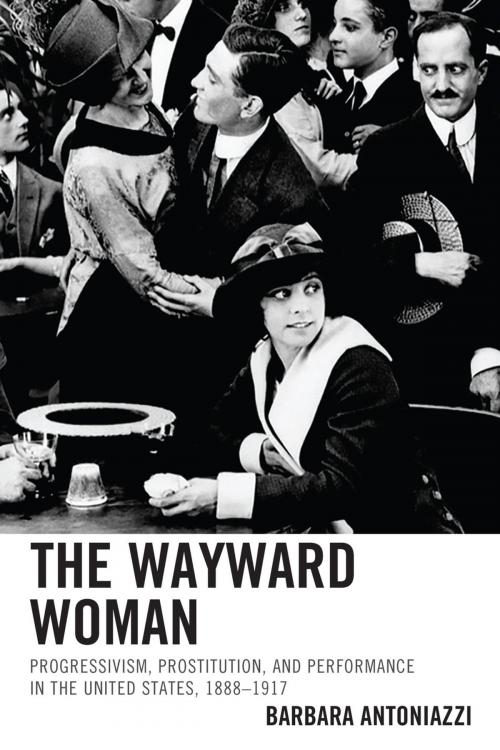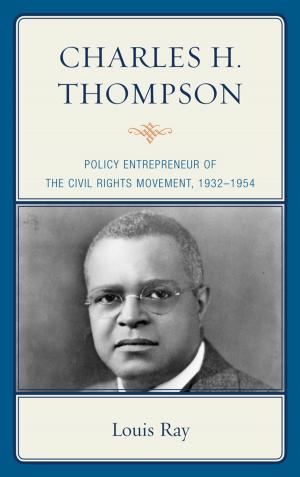The Wayward Woman
Progressivism, Prostitution, and Performance in the United States, 1888–1917
Fiction & Literature, Literary Theory & Criticism, American, Nonfiction, Social & Cultural Studies, Social Science, Gender Studies, Women&, History, Americas, United States, 20th Century| Author: | Barbara Antoniazzi | ISBN: | 9781611476637 |
| Publisher: | Fairleigh Dickinson University Press | Publication: | June 18, 2014 |
| Imprint: | Fairleigh Dickinson University Press | Language: | English |
| Author: | Barbara Antoniazzi |
| ISBN: | 9781611476637 |
| Publisher: | Fairleigh Dickinson University Press |
| Publication: | June 18, 2014 |
| Imprint: | Fairleigh Dickinson University Press |
| Language: | English |
The Wayward Woman takes a fresh look at the Progressive Era, recasting the turn-of-the-century debate on gender roles and prostitution. Recapitulating and transcending extant studies of female delinquency, prostitution literature, and Progressive womanhood, this work understands “female waywardness” as the critical intersection between the rise of female emancipation and the panic inspired by the period’s obsession with sexual enslavement. Concurrently, it explores the Progressive ambivalence about compassion and control which unfolded alongside a war on prostitution that traversed the realms of law, medicine, literature and politics. Drawing on theories of performativity the author develops “the wayward woman” as a capacious analytical category that encompasses all women who, countering the residual injunction of domesticity, brought new forms of femininity into the light of the public sphere: the activist, the professional and the divorcee, but also the female breadwinner, the charity girl and the urban woman of color––among many others. The book investigates the continuum of waywardness that stretches from the high-minded New Woman to the ever-victimized “white slave” as a cultural battlefield where numerous women stepped across the boundaries of class, race and respectability to claim new public personas. At the same time it reads the preoccupation with white slavery both as a symptom of and an antidote to this wave of change. Through an innovating collection of sources which brings together sociological writings, novels, plays, movies and legal documents, the book rearticulates the tensions of the Progressive Era between gender roles, blackness and whiteness, reformers and reformed, the citizens and the state. The Wayward Woman will be of much interest to students and scholars in the fields of American studies, women studies and performance studies.
The Wayward Woman takes a fresh look at the Progressive Era, recasting the turn-of-the-century debate on gender roles and prostitution. Recapitulating and transcending extant studies of female delinquency, prostitution literature, and Progressive womanhood, this work understands “female waywardness” as the critical intersection between the rise of female emancipation and the panic inspired by the period’s obsession with sexual enslavement. Concurrently, it explores the Progressive ambivalence about compassion and control which unfolded alongside a war on prostitution that traversed the realms of law, medicine, literature and politics. Drawing on theories of performativity the author develops “the wayward woman” as a capacious analytical category that encompasses all women who, countering the residual injunction of domesticity, brought new forms of femininity into the light of the public sphere: the activist, the professional and the divorcee, but also the female breadwinner, the charity girl and the urban woman of color––among many others. The book investigates the continuum of waywardness that stretches from the high-minded New Woman to the ever-victimized “white slave” as a cultural battlefield where numerous women stepped across the boundaries of class, race and respectability to claim new public personas. At the same time it reads the preoccupation with white slavery both as a symptom of and an antidote to this wave of change. Through an innovating collection of sources which brings together sociological writings, novels, plays, movies and legal documents, the book rearticulates the tensions of the Progressive Era between gender roles, blackness and whiteness, reformers and reformed, the citizens and the state. The Wayward Woman will be of much interest to students and scholars in the fields of American studies, women studies and performance studies.















